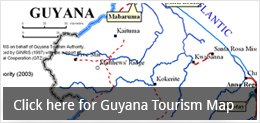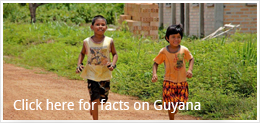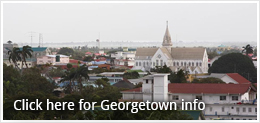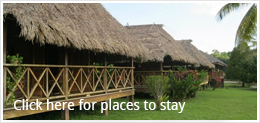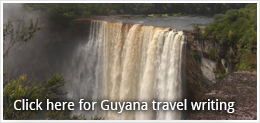Guyana is located in the north-eastern corner of the continent of South America. With an area of 83,000 sq. miles, it is the largest and most populous country of the Guianas trio, Guyana (formerly British Guiana), Suriname (formerly Dutch Guiana) and French Guiana. This cricket-loving nation offers an intriguing combination of the Caribbean and South America and is one of the few Caribbean countries not surrounded by water.
Guyana is divided into three counties: Essequibo (the largest), Demerara and Berbice, and has ten administrative regions. It derives its name from an Amerindian word guiana meaning Land of Many Waters, thanks to its many waterways, the largest of which are the Essequibo, Demerara and Berbice Rivers. The country is bordered by Venezuela, Suriname and Brazil with the Atlantic Ocean on its northern shores, but despite being surrounded by Spanish, Dutch and Portuguese-speaking neighbours, it is the only English-speaking nation in South America due to its British Colonial heritage. Known as the Land of Six Peoples, Guyana’s relatively small but diverse population can trace it roots back to Africa, China, India and Portugal, with a recently increasing number of Brazilians moving to settle here. It is also home to the largest indigenous community of Amerindians in the Caribbean.
At first glance, it appears to have more in common with the Caribbean than the rest of the continent because its wooden architecture, culture, traditions and cosmopolitan mix of Black, White, Asian, East Indian, Asian and Amerindian faces, is similar to that found in other Caribbean nations. However, Guyana takes on a more South American feel once you leave the narrow coastal belt, home to 90% of its population (but only about 10% of its land mass), and head towards its lush, verdant savannahs, pristine forests and mountainous areas, which cover the rest of the country.
Guyana’s true beauty lies in its hinterland areas and this is where you will have the chance to meet and commune with Amerindians, the region’s first settlers, and be amazed by the country’s powerful rivers, jaw-dropping scenery and documentary-inspiring flora and fauna. As such, if white sandy beaches and sparkling emerald water is what you seek then this is not the country for you. However, if you are keen on eco-tourism, adventure tours, bird-watching, swimming in red water creeks, jungle treks, mountain climbs and other outdoor pursuits, then book your flight immediately.
The majestic Kaieteur Falls is one of Guyana’s natural wonders and amongst the tallest and most powerful waterfalls in the world. The country is also proud of its rainforest conservation efforts as well as its legendary collection of wildlife such as birds, monkeys, reptiles, fish, black caiman, Giant Otters, Giant Anteaters and the ever elusive Jaguar. However, the jungle is not a zoo so don’t expect wildlife to appear simply because you show up on their turf with binoculars and a camera!
Guyana’s transportation, accommodation and tourism infrastructure have improved, so with careful planning, a flexible budget and a spirit of adventure, you can explore the country using a mixture of domestic flights, overland and water transportation, plus some good old-fashioned trekking.
If you are visiting for a short time and unless you are spending time with friends and family, the capital, Georgetown, with its wide tree-lined avenues, botanical parks and noteworthy historic wooden buildings will only keep you occupied for a few days. So, even if you only have a day or two to spare, consider venturing further afield to discover some of Guyana’s outstanding natural attractions.
For a map of Guyana and more information on Guyana, Georgetown, things to do, where to eat and drink, where to stay and handy tips, click on the thumbnail pictures on the right.

